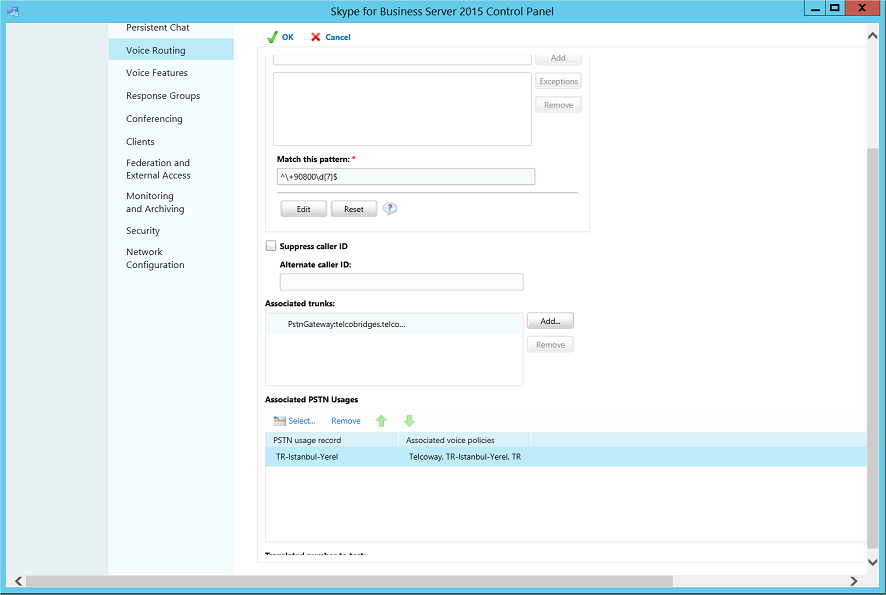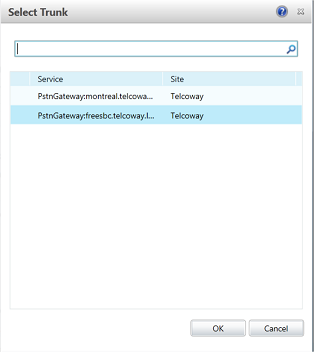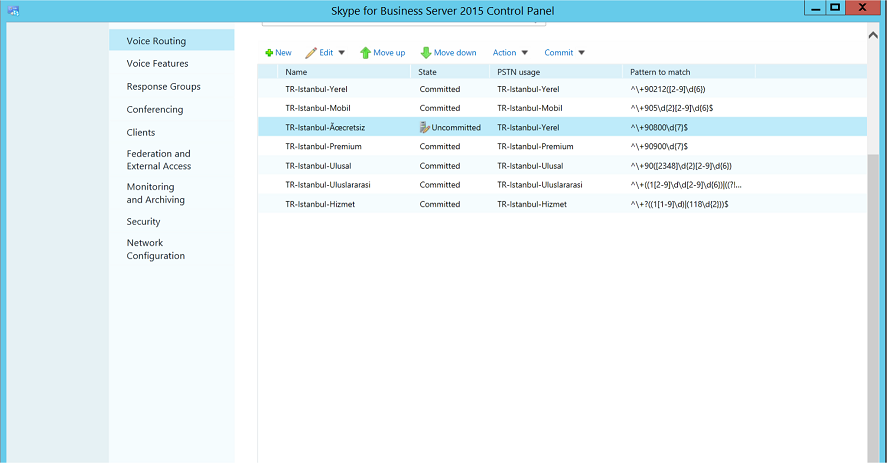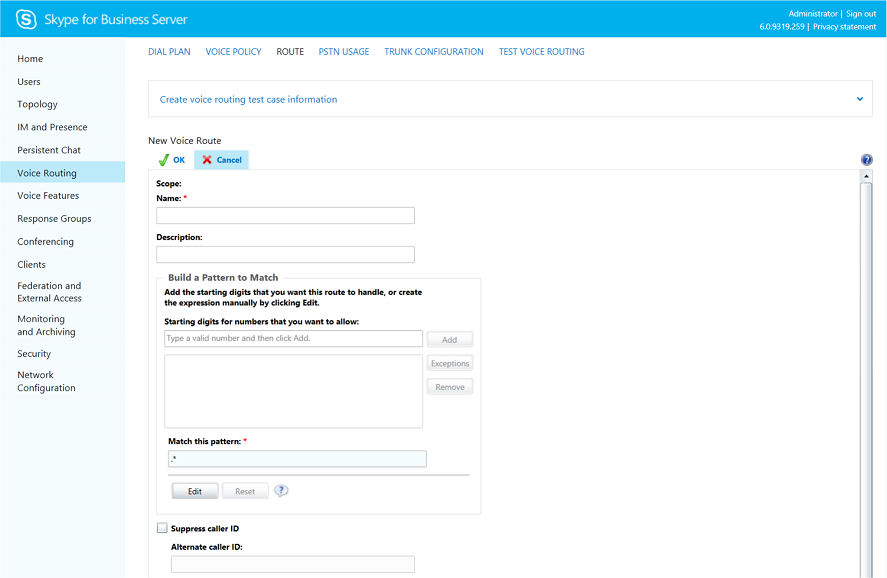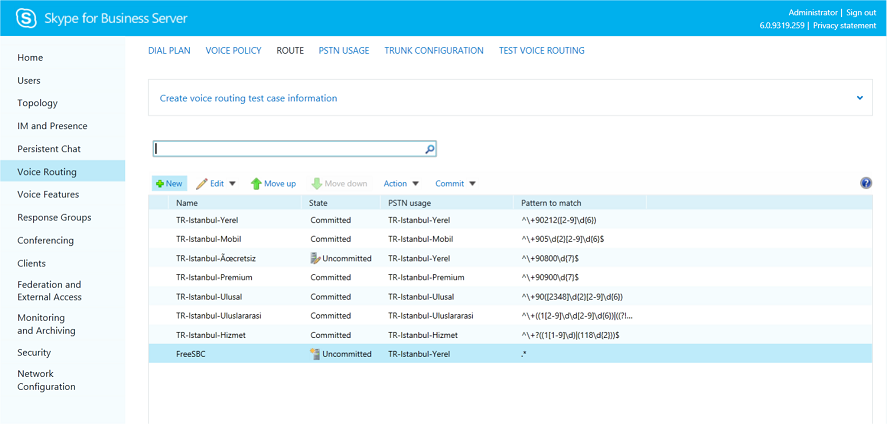FreeSBC:Skype for Business:Example
Contents |
Applies to version: v3.1
Introduction
The Skype for Business Example Configuration provides you with a step by step Skype for Business Configuration using TCP with FreeSbc systems, using the Web Portal configuration tool. Complete general installation configuration steps, before you begin configuring your specific scenario. Used Protocols: SIP/UDP for ITSP SIP Trunk, SIP/TCP for S4B Front End Server
Skype for Business Example Environment
Configuring Skype for Business Server 2015
This procedure describes how to configure FreeSBC as an IP /PSTN Gateway in Skype for Business.
Adding FreeSBC in to S4B Topology
1. On the server where Topology Builder is installed, start the Skype for Business Server 2015 Topology Builder (Windows Start menu > search for Skype for Business Server Topology Builder), as shown below:
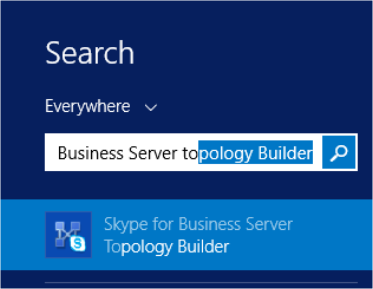
2. Run Topology Builder. The Following is displayed,
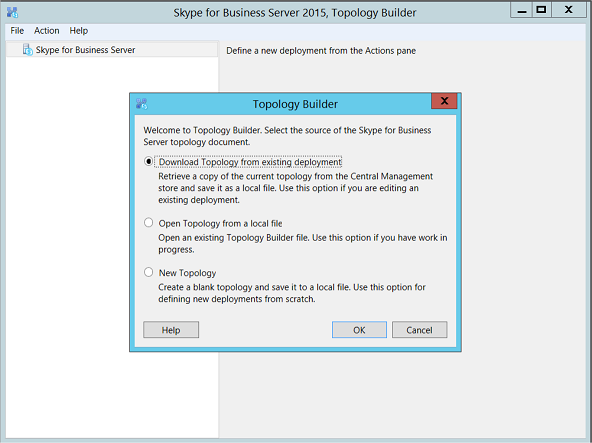
3. Select the Download Topology from existing deployment option, and then click OK; you are prompted to save the downloaded topology. Enter a name for the topology file and then click Save.
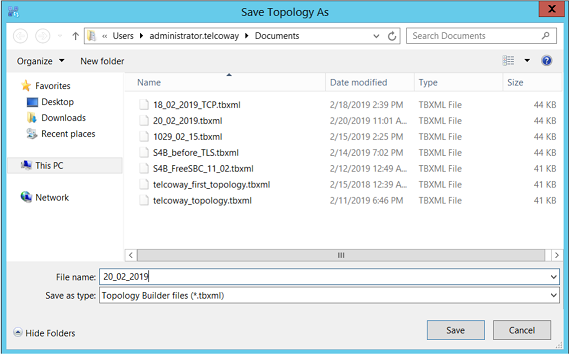
The Topology Builder screen with the downloaded topology is displayed:
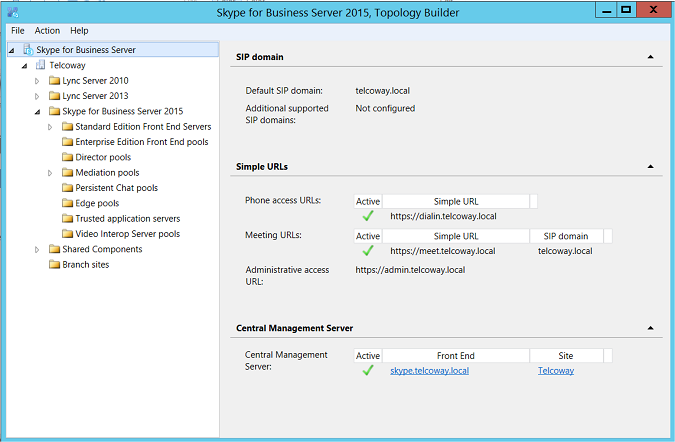
4. Under the Shared Components node, right-click to PSTN gateways node, and then from the menu, choose New IP/PSTN Gateway

5. Enter the Fully Qualified Domain Name (FQDN) of the FreeSBC (e.g., freesbc.telcoway.local). Click Next
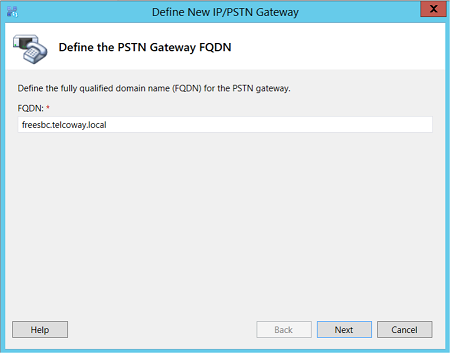
6. Define the listening mode of the Ip address of your new PSTN Gateway, click Next.
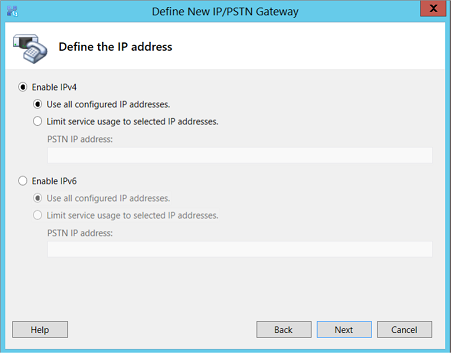
7. Define a root trunk for the PSTN gateway. A trunk is a logical connection between the Mediation Server and a gateway uniquely identified by the following combination: Mediation Server FQDN, Mediation Server listening port (TLS or TCP), gateway IP and FQDN, and gateway listening port.
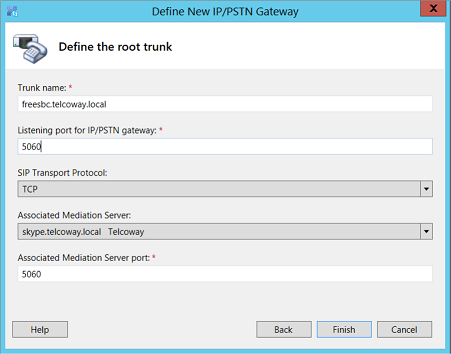
- In the 'Listening Port for IP/PSTN Gateway' field, enter the listening port that the FreeSBC will use for SIP messages from the Mediation Server that will be associated with the root trunk of the PSTN gateway (e.g., 5060). This parameter is later configured in the SIP Transport Server.
- In the 'SIP Transport Protocol' field, select the transport type (TCP) that the trunk uses. This parameter is later configured in the SIP Transport Server.
- In the 'Associated Mediation Server' field, select the Mediation Server pool to associate with the root trunk of this PSTN gateway.
- In the 'Associated Mediation Server Port' field, enter the listening port that the Mediation Server will use for SIP messages from the FreeSBC. This parameter is later configured in the S4B NAP settings.
- Click Finish.
8. The FreeSBC added as a PSTN Gateway, and a trunk is created as shown below:
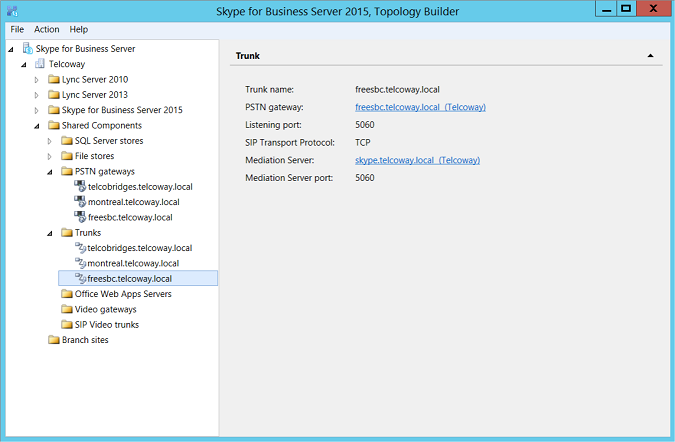
9. Publish the Topology; In the main tree, select the root node Skype for Business Server, and then from the Action menu, choose Publish Topology, as shown below:
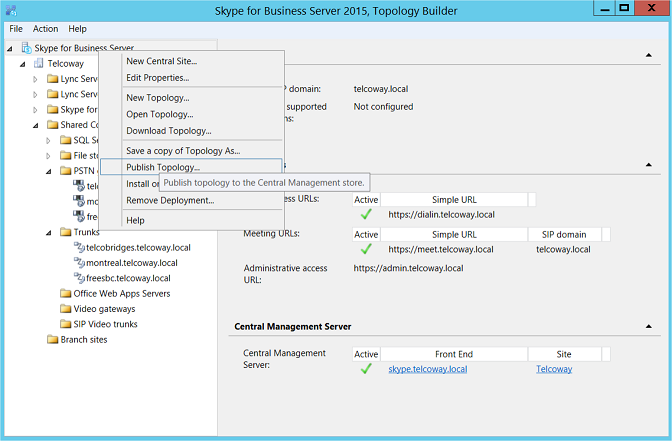
In the new window click Next; the Topology Builder starts to publish your topology, as shown below:
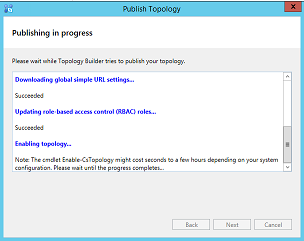
10. Wait until the publishing topology process completes successfully, and click Finish as shown below:
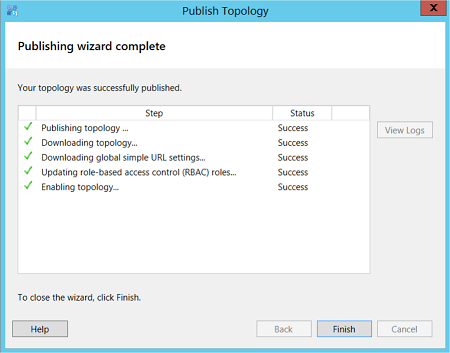
Configuring the "Route" on Skype for Business Server 2015
The procedure below describes how to configure a "Route" on the Skype for Business Server 2015 and to associate it with the FreeSBC PSTN Gateway.
1. Start the Microsoft Skype for Business Server 2015 Control Panel (Start > search for Microsoft Skype for Business Server Control Panel), as shown below:
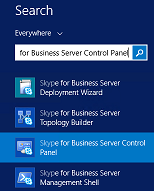
2. Enter your login credentials:
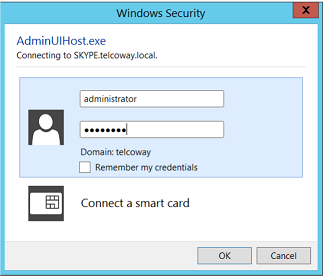
3. In the left navigation pane, select Voice Routing
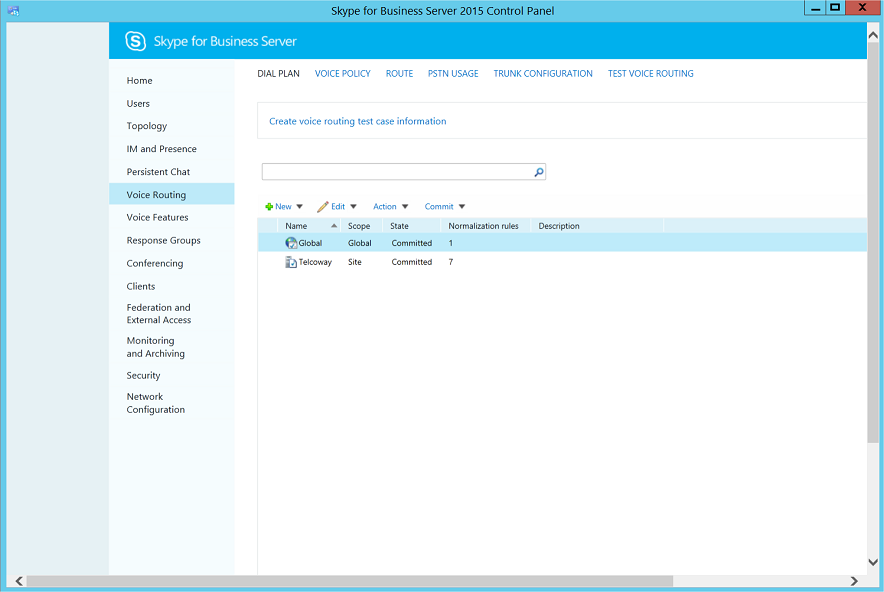
4. In the Voice Routing page, select the Route tab.
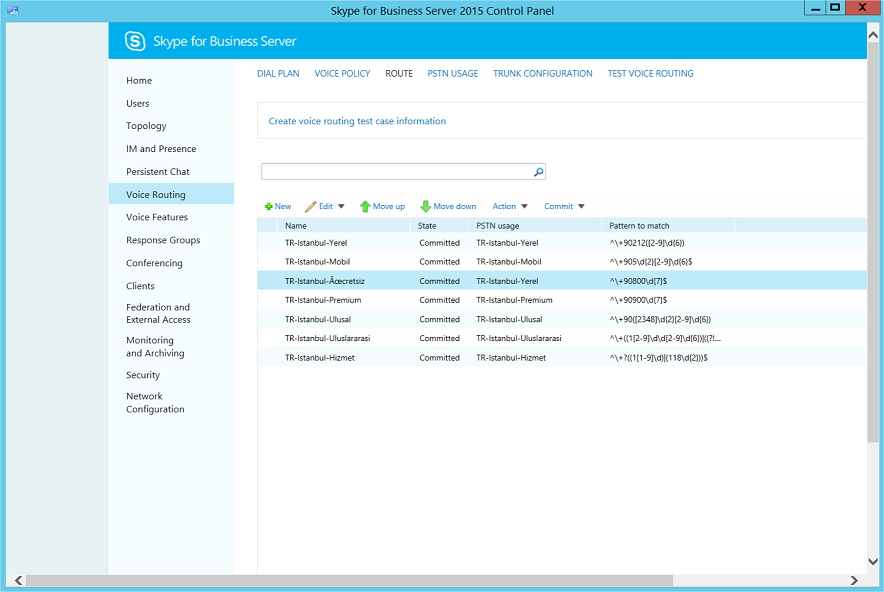
5. You can edit an existing route or add a new route.
A - Editing an existing route
- Click one of the existing route
- Go to Associated trunks, and then click Add
- Select newly added trunk from the list (freesbc.telcoway.local) and then click OK
- Click OK (located on the top of the New Voice Route page); the Edited Voice Route (Uncommitted) is displayed:
- From the Commit drop-down list, choose to Commit all,
B - Adding a new route
- Click New; the New Voice Route page appears:
- In the ‘Name’ field enter a name for this route.
- In the 'Starting digits for numbers that you want to allow' field, enter the starting digits you want this route to handle (e.g., * to match all numbers), and then click Add
- Click OK (located on the top of the New Voice Route page); the New Voice Route (Uncommitted) is displayed:
- From the Commit drop-down list, choose to Commit all.
6. Associate the route with the FreeSBC Trunk that you created:
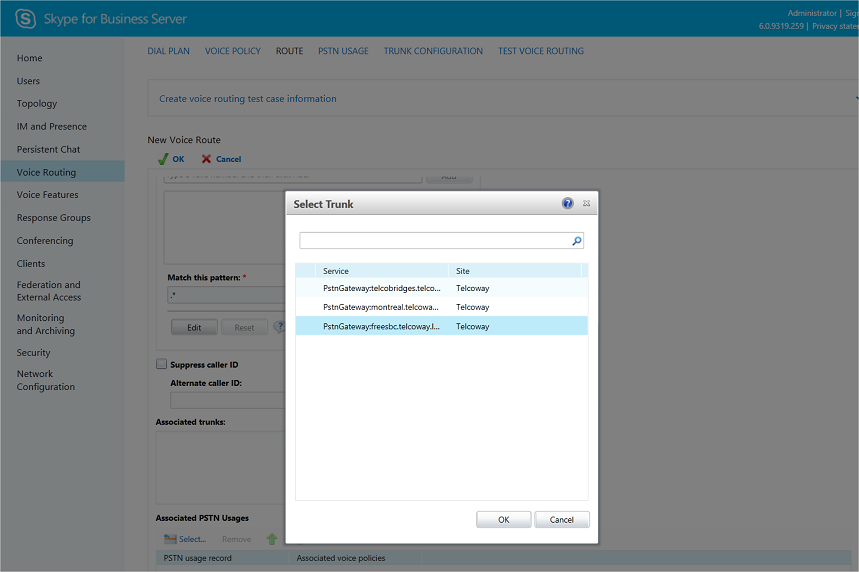
7. Associate a PSTN Usage to this route: Under the 'Associated PSTN Usages' group, click Select and then add the associated PSTN Usage


